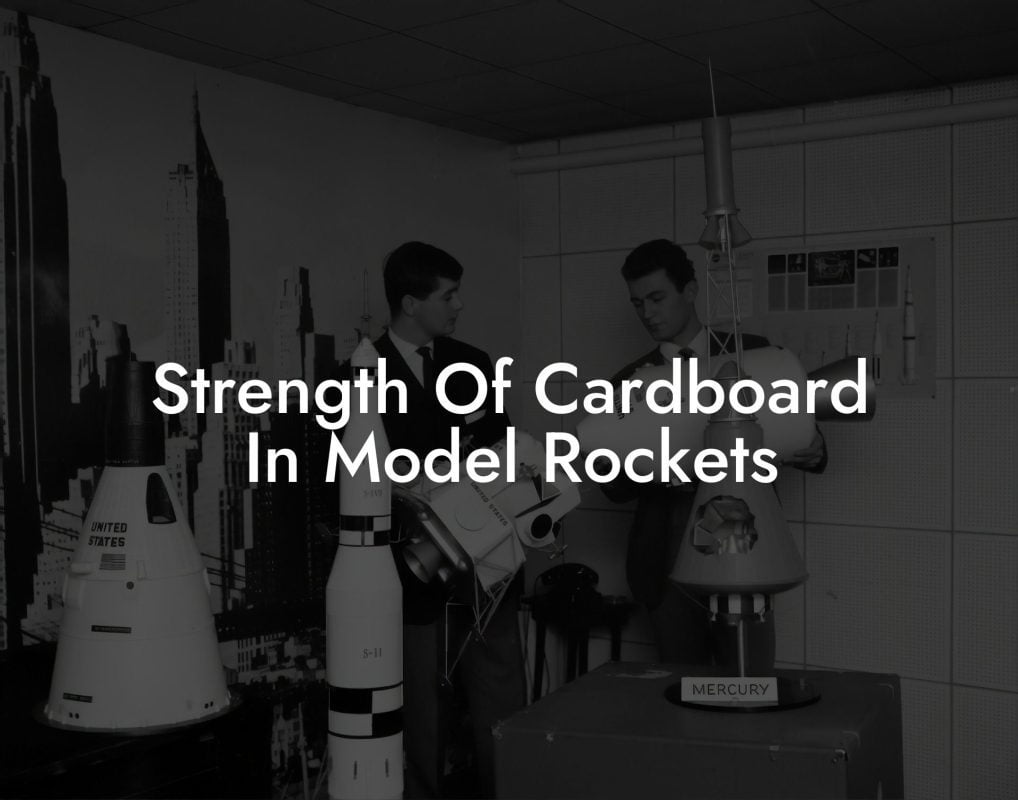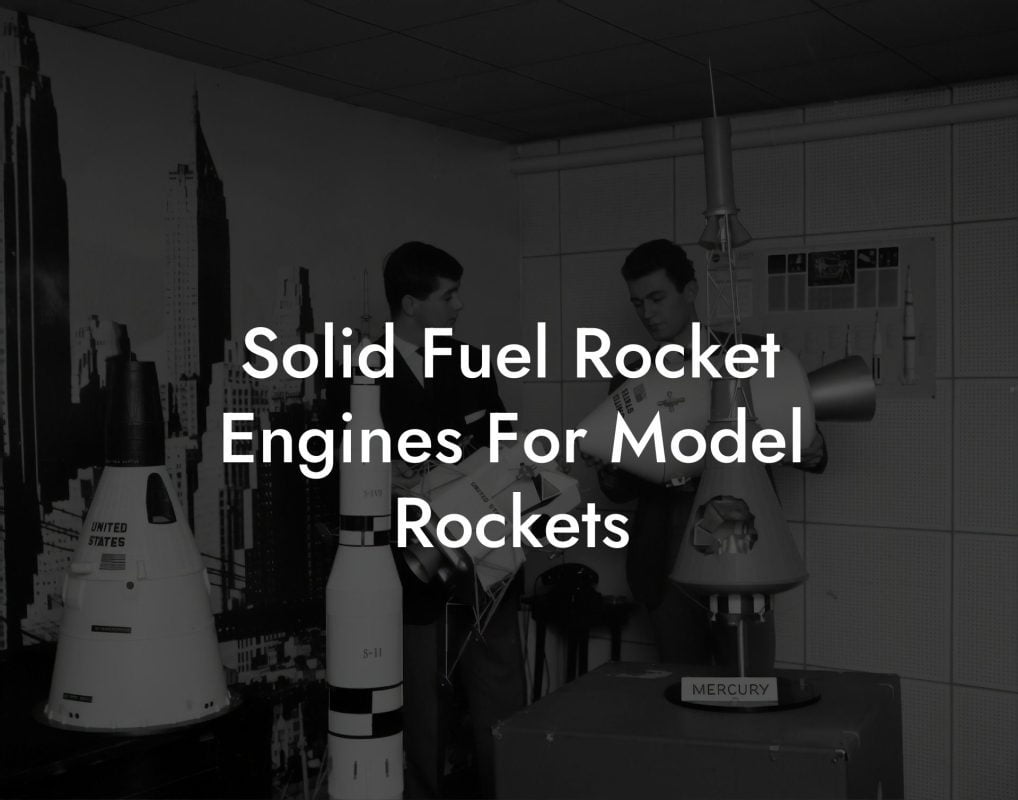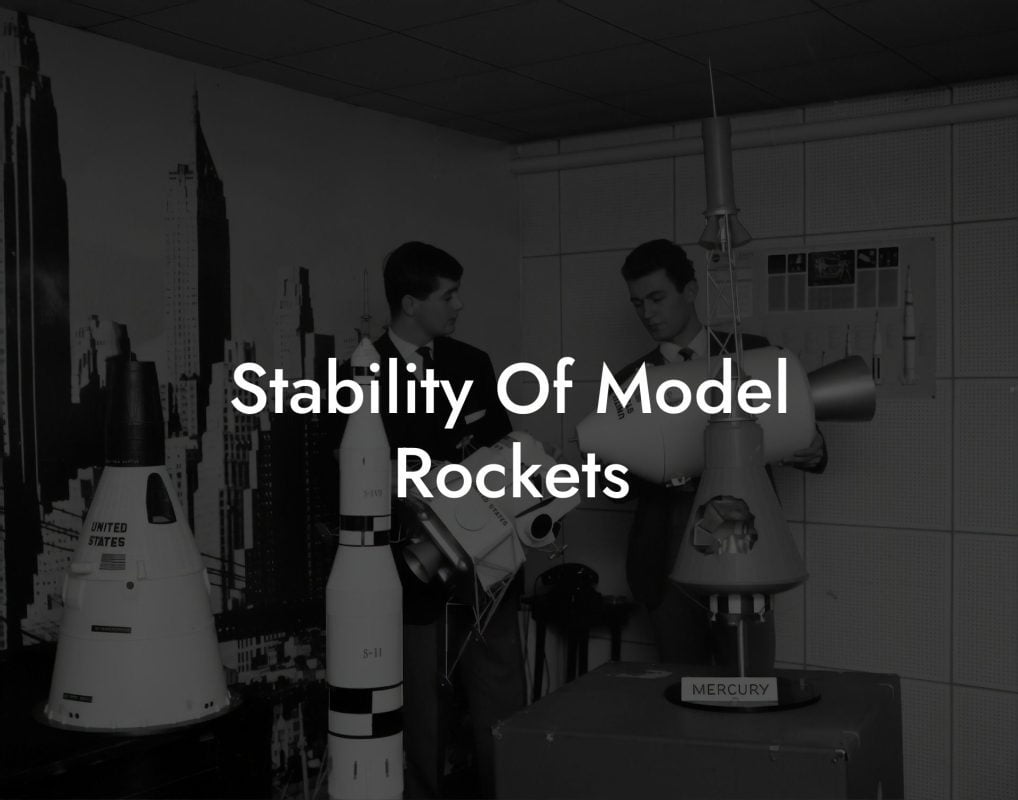Imagine soaring to new heights with model rockets that defy gravity and inspire wonder. Welcome to the world of multiple stage model rockets, where innovation meets excitement and the boundaries of space exploration are pushed to new limits. Whether you're a seasoned enthusiast or just starting your rocketry journey, this comprehensive guide will propel you into the stratosphere of model rocketry, covering everything from the fundamentals to advanced techniques and expert tips.
Quick Links to Useful Sections
- What Are Multiple Stage Model Rockets?
- The Science Behind Multiple Stage Model Rockets
- Designing and Building Multiple Stage Model Rockets
- Launching and Recovering Multiple Stage Model Rockets
- Advanced Techniques for Multiple Stage Model Rockets
- Resources and community Support: Your Next Steps
- Frequently Asked Questions: Multiple Stage Model Rockets
What Are Multiple Stage Model Rockets?
Multiple stage model rockets are designed to reach incredible altitudes by jettisoning spent stages, allowing the remaining stages to continue propelling the rocket upward. This innovative approach enables model rockets to break free from the constraints of single-stage designs, achieving unprecedented heights and opening up new possibilities for space exploration.
In simple terms, a multiple stage model rocket is a rocket that has two or more stages, each with its own propulsion system. As the rocket gains altitude, the spent stages are discarded, and the next stage ignites, propelling the rocket even higher.
The Science Behind Multiple Stage Model Rockets
The concept of multiple stage model rockets is rooted in the principles of physics and engineering. By understanding the science behind these rockets, you'll be better equipped to design, build, and launch your own multiple stage model rockets.
The key to a successful multiple stage model rocket is the efficient transfer of energy from one stage to the next. This is achieved through a process called staging, where the spent stage is jettisoned, and the next stage ignites, ensuring a seamless transition of power.
Looking For The Best Model Rocket Kits? You'll Love These:
- Thrust-to-Weight Ratio: The thrust-to-weight ratio is critical in multiple stage model rockets. A higher thrust-to-weight ratio enables the rocket to overcome the force of gravity and reach greater altitudes.
- Specific Impulse: Specific impulse measures the efficiency of a rocket engine. A higher specific impulse indicates a more efficient engine, resulting in greater altitude gains.
- Mass Ratio: The mass ratio is the ratio of the rocket's initial mass to its final mass. A higher mass ratio results in a more efficient rocket, as less mass is wasted on spent stages.
Designing and Building Multiple Stage Model Rockets
Building a multiple stage model rocket requires careful planning, precision engineering, and attention to detail. Here are some expert tips to help you get started:
Choose the Right Materials: Select materials that are lightweight, yet strong enough to withstand the stresses of launch and flight. Common materials include balsa wood, plastic, and fiberglass.
Optimize Your Design: Use computer-aided design (CAD) software to optimize your rocket's design, ensuring minimal weight and maximum efficiency.
Pay Attention to Aerodynamics: The shape and size of your rocket's nose cone, fins, and body tube can significantly impact its aerodynamics and stability.
Integrate Electronic Components: Electronic components, such as altimeters and GPS trackers, can enhance your rocket's performance and provide valuable data for future improvements.
Launching and Recovering Multiple Stage Model Rockets
Launching and recovering a multiple stage model rocket requires careful planning, precision execution, and a thorough understanding of the rocket's behavior.
Choose the Right Launch Site: Select a launch site with minimal obstacles, a clear recovery area, and suitable wind conditions.
Prepare for Launch: Conduct thorough safety checks, ensure all electronic components are functioning correctly, and carefully assemble the rocket's stages.
Recovery Techniques: Develop a recovery plan, including the use of parachutes, streamers, or other recovery systems, to ensure a safe and controlled descent.
Advanced Techniques for Multiple Stage Model Rockets
Take your model rocketry skills to the next level with these advanced techniques:
Clustering: Cluster multiple engines together to increase thrust and improve efficiency.
Staging Techniques: Experiment with different staging techniques, such as parallel staging or series staging, to optimize your rocket's performance.
Guidance Systems: Integrate guidance systems, such as GPS or inertial measurement units, to improve your rocket's accuracy and stability.
Resources and community Support: Your Next Steps
Join the vibrant community of model rocket enthusiasts and take advantage of these valuable resources to further your knowledge and skills:
Model Rocketry Forums: Participate in online forums, such as Reddit's r/modelrockets, to connect with other enthusiasts, share knowledge, and learn from experts.
Model Rocketry Clubs: Join local model rocketry clubs or organizations, such as the National Association of Rocketry, to network with fellow enthusiasts and gain access to exclusive resources.
Online Tutorials and Guides: Utilize online tutorials, guides, and videos to learn new skills, improve your techniques, and stay up-to-date with the latest developments in model rocketry.
Frequently Asked Questions: Multiple Stage Model Rockets
Get answers to your most pressing questions about multiple stage model rockets:
1. What is the highest altitude a multiple stage model rocket can reach?
The highest altitude a multiple stage model rocket can reach depends on various factors, including the rocket's design, materials, and propulsion system. However, some model rockets have reached altitudes exceeding 100,000 feet.
2. How do I ensure a successful stage separation?
Successful stage separation requires careful design, precise engineering, and thorough testing. Ensure that the stages are properly aligned, the separation mechanism is reliable, and the rocket's electronics are functioning correctly.
3. What safety precautions should I take when launching a multiple stage model rocket?
Always follow safety guidelines and best practices when launching a multiple stage model rocket. Ensure a safe distance from spectators, avoid launching near obstacles, and wear protective gear, such as safety glasses and a helmet.
Looking For The Best Model Rocket Kits? You'll Love These:
Useful Interruption: Dive deeper into the world of Model Rockets with our most popular sections. If there is anything you think is missing or anything you would love for us to write about, just give us a shout.
- Getting Started & Basics With Model Rockets
- Model Rocket Design, Build & Customization
- Model Rocket Propulsion & Engine Technology
- Model Rocket Launch Techniques & Recovery
- Model Rocket Advanced Rocketry & Innovations
- Model Rocket DIY and Customization
- Model Rocket Equipment Reviews & Digital Tools
- Community, Competitions & Education
- Model Rocket Troubleshooting & FAQs
- Model Rocket Bonus/Seasonal & Niche Topics
A group of model rocket enthusiasts gathered at a field for their weekly launch event. Among them was Dave, a seasoned builder known for pushing the limits of hobby rocketry. This time, he had outdone himself.
“Ladies and gentlemen,” Dave announced, dramatically pulling a cloth off his latest creation, “I present to you: The Kraken!”
The crowd gasped. This wasn’t just a model rocket—it was a monster. The thing stood 8 feet tall, had six clustered engines, and was covered in enough duct tape to qualify as a classified aerospace project.
“Dave,” muttered Steve, the cautious safety officer, “Have you, uh… done the math on this?”
“Math?” Dave scoffed. “I built it in my garage at 3 a.m. with parts from eBay. This is an art piece, Steve.”
The countdown began.
5…
4…
3…
2…
1…
The engines ignited with a BOOM, and The Kraken shot up… kind of. It immediately did a violent barrel roll, narrowly missing the spectators before skyrocketing at an angle that could only be described as “legally questionable.”
The crowd collectively ducked as The Kraken flew straight over the adjacent cornfield, where Old Man Jenkins, the grumpiest farmer in town, was minding his business.
KABOOM!
The rocket disappeared behind the barn. A moment later, a flaming piece of Estes igniter wire landed at Steve’s feet. The silence was deafening.
And then—an unmistakable sound echoed across the field.
Jenkins’ shotgun being cocked.
“DAVE!!!” Steve shouted. “RUN.”
And that was the day Dave invented the first-ever biologically powered rocket booster: pure adrenaline.
To this day, nobody knows where The Kraken landed, but legend has it, it still haunts the skies, terrifying unsuspecting drones and low-flying birds.















